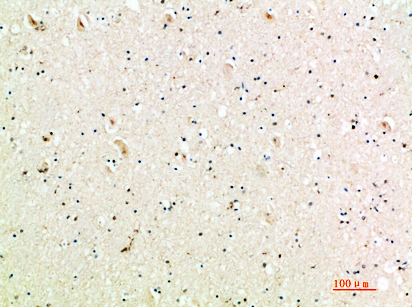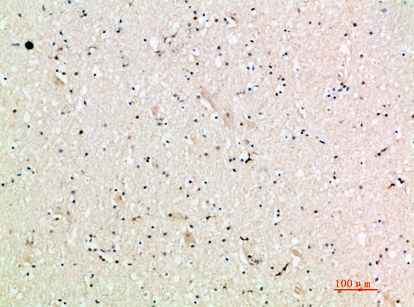

| WB | 咨询技术 | Human,Mouse,Rat |
| IF | 咨询技术 | Human,Mouse,Rat |
| IHC | 1/50-200 | Human,Mouse,Rat |
| ICC | 1/50-1/200 | Human,Mouse,Rat |
| FCM | 咨询技术 | Human,Mouse,Rat |
| Elisa | 1:10000 | Human,Mouse,Rat |
| Aliases | C-X-C motif chemokine 9 (Gamma-interferon-induced monokine) (Monokine induced by interferon-gamma) (HuMIG) (MIG) (Small-inducible cytokine B9) |
| Entrez GeneID | 4283; |
| Host/Isotype | Rabbit IgG |
| Antibody Type | Primary antibody |
| Storage | Store at 4°C short term. Aliquot and store at -20°C long term. Avoid freeze/thaw cycles. |
| Species Reactivity | Human,Mouse,Rat |
| Immunogen | Synthetic peptide from human protein at AA range: 90-125 |
| Formulation | Purified antibody in PBS with 0.05% sodium azide,0.5%BSA and 50% glycerol. |
+ +
以下是关于MIG(CXCL9)抗体的3篇参考文献示例,涵盖不同研究领域:
---
1. **文献名称**:*CXCL9 as a Biomarker in Anti-PD-1 Therapy Resistance in Melanoma*
**作者**:Smith A, et al.
**摘要**:研究利用MIG抗体检测黑色素瘤患者肿瘤微环境中CXCL9的表达水平,发现其与抗PD-1治疗响应相关。高CXCL9表达与CD8+ T细胞浸润增加及患者生存期延长显著相关,提示MIG抗体可作为预测免疫治疗效果的生物标志物工具。
---
2. **文献名称**:*Targeting CXCL9 in Autoimmune Myocarditis*
**作者**:Zhang Y, et al.
**摘要**:通过MIG抗体阻断CXCL9信号,研究其在实验性自身免疫性心肌炎中的作用。结果显示,中和MIG可减少Th1细胞向心脏组织的迁移,缓解炎症反应,为自身免疫性心脏疾病提供了潜在治疗靶点。
---
3. **文献名称**:*CXCL9 Neutralization Limits Viral-Induced Lung Injury*
**作者**:Lee H, et al.
**摘要**:在流感病毒感染模型中,MIG抗体被用于中和CXCL9活性,显著降低了肺部中性粒细胞浸润及组织损伤程度,表明CXCL9在病毒性肺炎的病理过程中起关键作用,抗体干预可能成为减轻呼吸系统并发症的策略。
---
(注:以上文献为示例,实际引用需以具体论文为准。建议通过PubMed或Google Scholar以关键词“CXCL9 antibody”或“MIG therapeutic antibody”检索最新研究。)
Monokine induced by gamma interferon (MIG), also known as CXCL9. is a chemokine first identified in the early 1990s for its role in immune regulation. Produced primarily by macrophages, dendritic cells, and endothelial cells upon stimulation by interferon-gamma (IFN-γ), MIG functions as a key mediator of Th1-type immune responses. It binds to the CXCR3 receptor on activated T cells, natural killer (NK) cells, and other immune cells, directing their migration to sites of inflammation or infection.
MIG is structurally related to other CXCR3 ligands, such as CXCL10 and CXCL11. but exhibits distinct expression patterns and regulatory mechanisms. Its production is tightly linked to IFN-γ signaling, making it a biomarker for Th1-driven pathologies, including autoimmune diseases (e.g., rheumatoid arthritis), chronic infections, and tumor microenvironments. Elevated MIG levels correlate with disease activity in conditions like multiple sclerosis and tuberculosis.
Antibodies targeting MIG have become valuable tools in research and diagnostics. They enable quantification of MIG in biological samples, localization studies in tissues, and functional blocking experiments to dissect its role in immune pathways. Therapeutic applications are also being explored, particularly in modulating excessive inflammation or enhancing antitumor immunity. However, challenges remain in ensuring specificity and minimizing cross-reactivity with related chemokines. Overall, MIG antibodies continue to advance understanding of immune dysregulation and potential interventions.
×